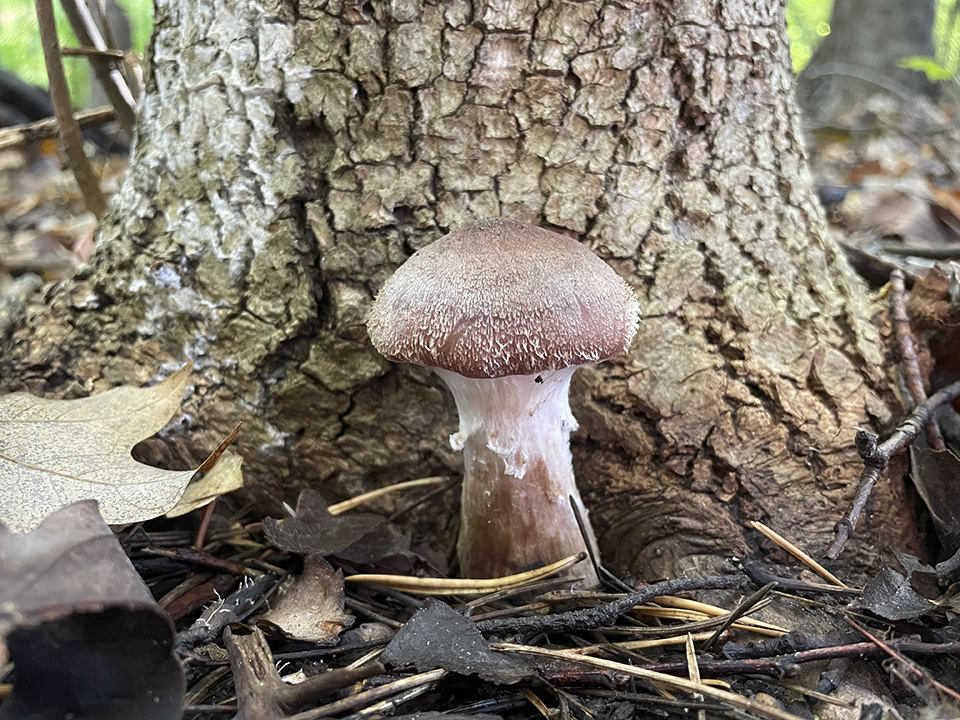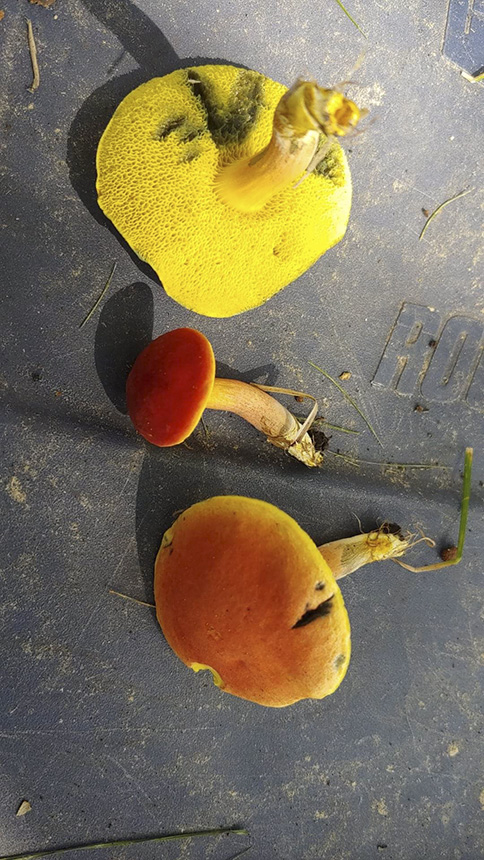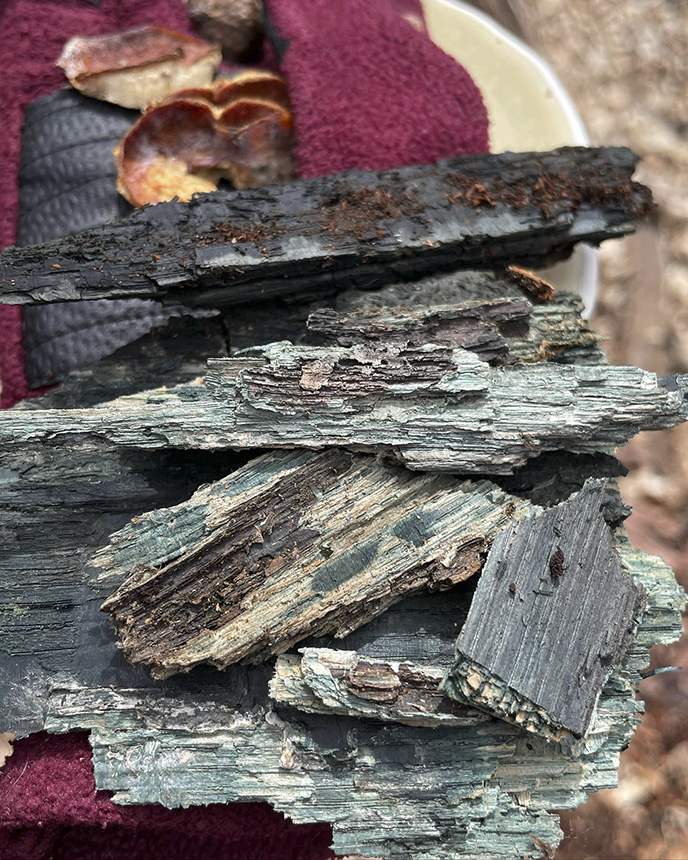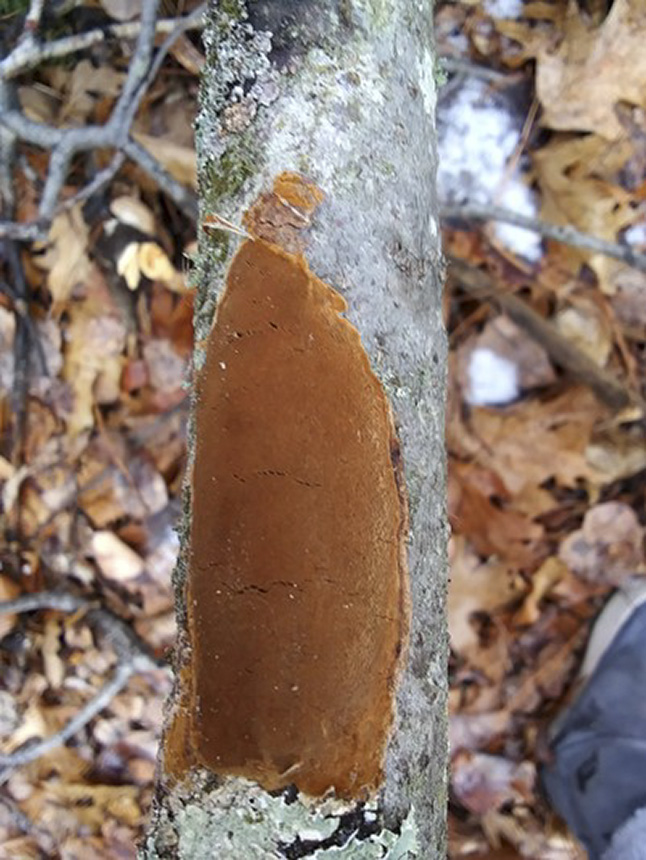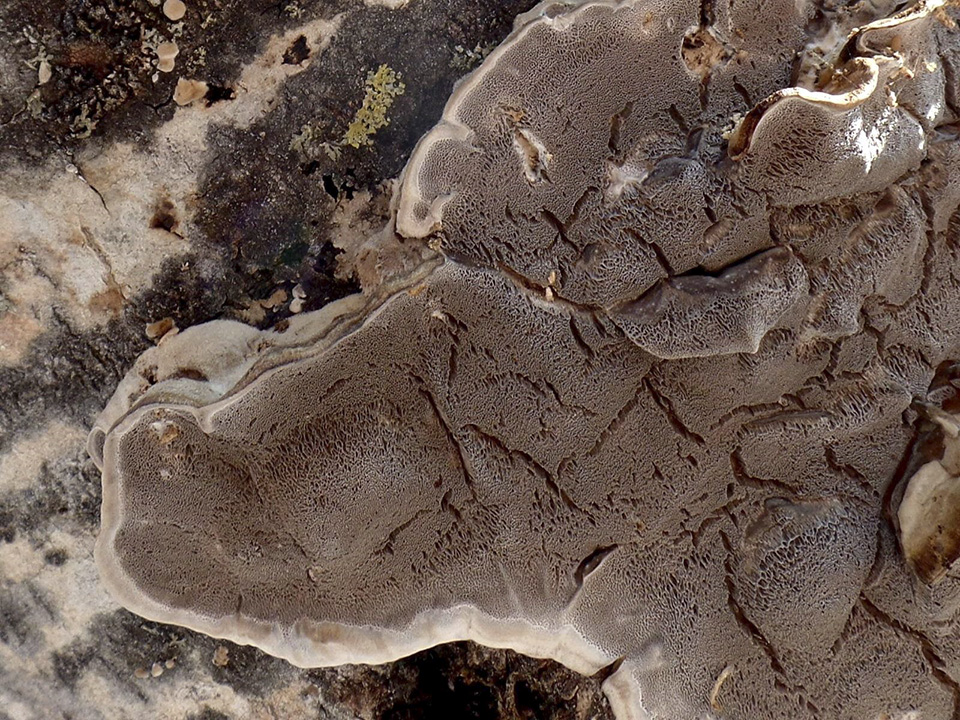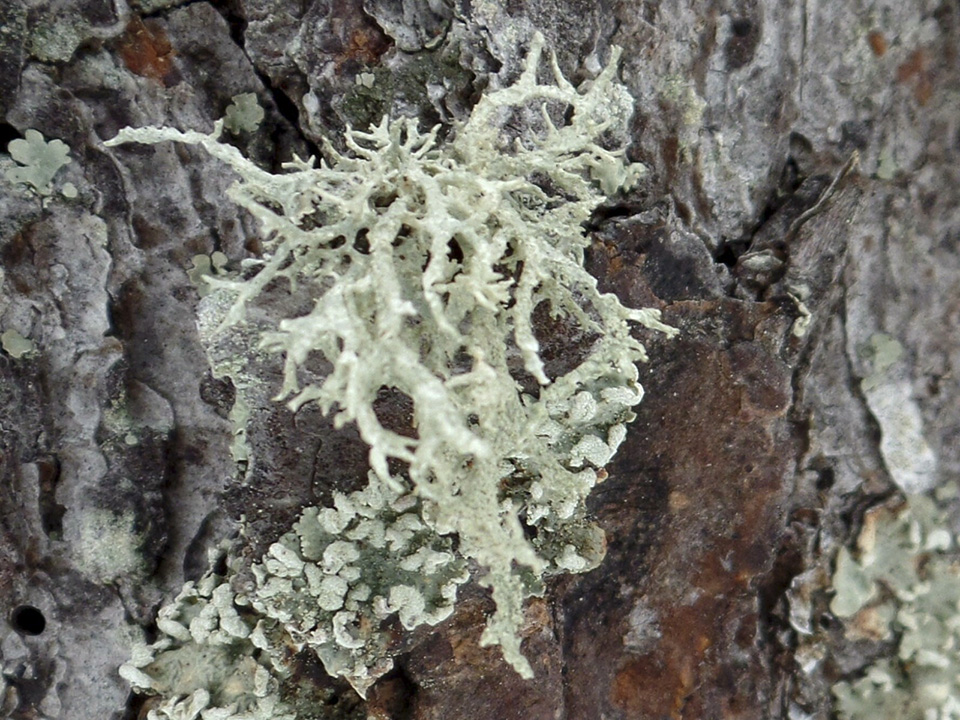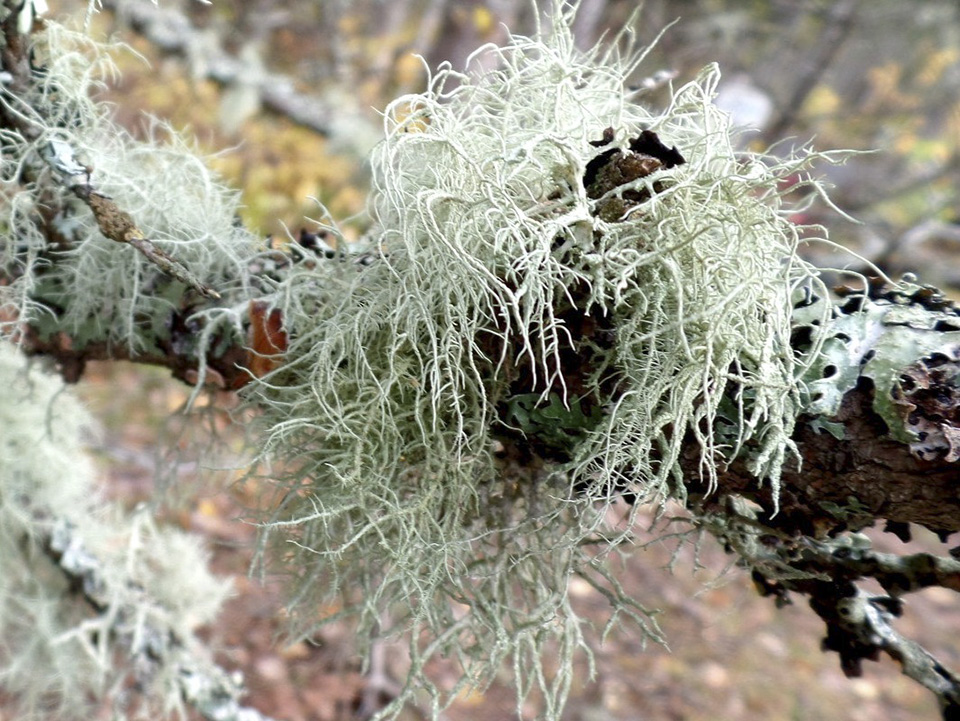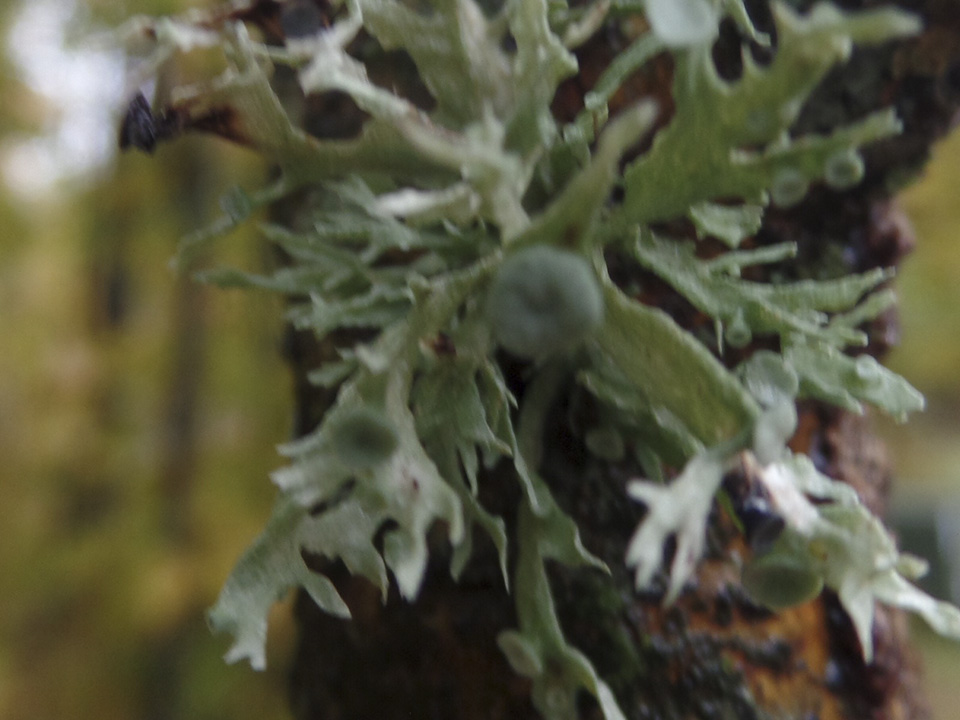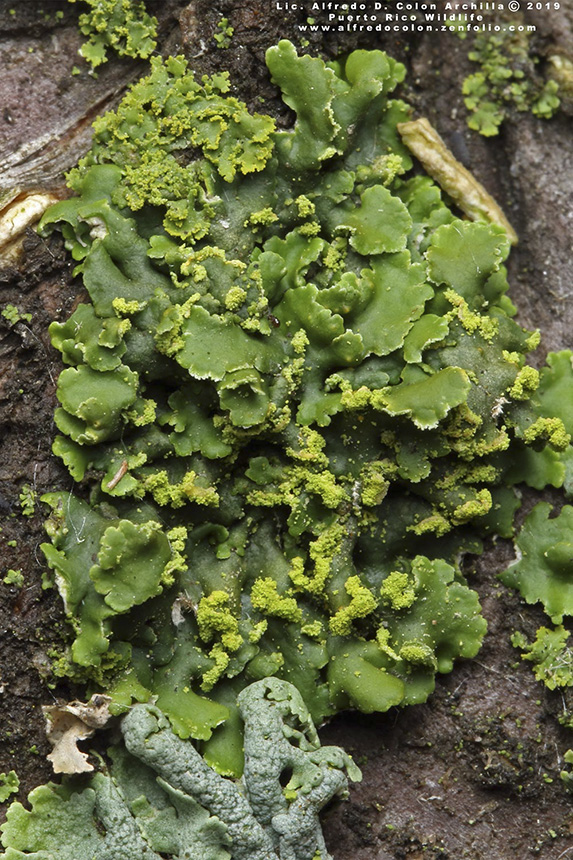
Powdered Sunshine Lichen (Vulpicida pinastri) is an easily recognized, widespread, and very common lichen. It occurs in northern forested areas around the globe, including Europe, Asia, and North America. It grows on the bark of conifers and birch. It is usually found no more than chest high, probably protected under snow from desiccation by winter winds.
The vegetative body is leaf-like and divided into lobes. When growing on flat surfaces, the lobes are short, and it forms a flat rosette. When growing on thin branches, the lobes are longer and more erect. The upper side is greenish-yellow or yellowish-green in sunny locations, grayish-green in shaded locations. The margins are densely covered with bright yellow reproductive granules, giving them a powdered look. This is the feature that gives the lichen its common name.
http://www.minnesotaseasons.com/Fungi/Powdered_Sunshine_Lichen.html

